PTE Describe Image practice tasks form a very powerful part of the speaking module of PTE Academic. It measures your speaking abilities in addition to your skill to assume on your feet.
Describe Image process contributes only for your PTE speaking ranking (speaking, pronunciation and oral fluency).
You might get bar graphs, line graphs, pie charts, diagrams, photographs, or maps to describe. Once an image appears on the screen, you are allocated 25 seconds to study it. Then, after
25 seconds, the microphone opens for 40 seconds.
There are Seven different types of images that typically appear in the exam:
- Bar Graph
- Line Graph
- Pie Chart
- Table
- Process Diagram
- Map
- Venn Diagram
Take a look at the following PTE Describe Image Practice Template to score better in this task:
BAR GRAPH

Sample Speaking: This horizontal/vertical bar graph depicts the information referring to households with access of the internet. The data is presented/calibrated in percentages. It’s crystal clear from the graph that 2020 has the highest percentage, at 70%, while 2017 has the lowest, roughly 60. Apart from that, 2018 and 2019 have almost equivalent percentages, roughly 60. In conclusion/Overall, it may be noticed that a gradual increase was there from the year 2017 to 2020.

Sample Speaking: The given image shows several trends and features. Looking closely at the image, I can deduce that the image contains different shapes, colors, texts, and numbers. Basically, a thorough analysis of the picture reveals a lot of detail. The image displays various things such as invest, sales, and profit. Similarly, Year 1, Year 2, and Year 3 can be observed in the image. I can notice 4.3, 2.4, and 2. However, the illustration also highlights 3.5, 3.8, and 4.5. In conclusion, the picture provides important information.
LINE GRAPHS
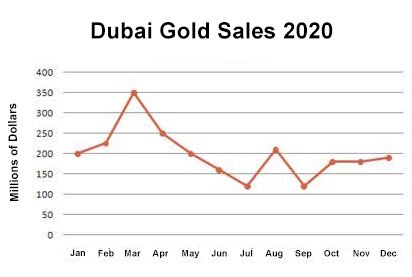
Sample Speaking: This line graph highlights the Dubai gold sale over a period of 2020 from Jan to Dec. The quantity used to be highest in March at 350 millions of dollars, and the quantity regularly declined, to reach a low of 100 million dollars in July. On the other hand, in July , the number of 100 million dollars used to be the lowest in 2020, and it gradually rose,peaking at 200 million dollars. In conclusion/Overall, it may be noticed that fluctuation was observed in the given data.

Sample Speaking: The graph shows the difference in wheat exports in three different areas.
The line graph of wheat experts shows a quite different pattern between 1985 and 1990. In 1985, Australia exported around 15 million tonnes of wheat and the following year the number seems to increase by one million tonnes to 16 million. After that, there was a gradual decline until 1989 and 1990, when they stabilized at about 11 million tonnes. Over the same period, the amount of Canadian exports varied greatly. It started at 19 million tonnes in 1985, reached a peak in 1988 of 24 million, dropped dramatically in 1989 to 14 million tonnes, and then climbed back to 19 million in 1990. Exports from Australia started declining over the five-year period, while the Canadian market fluctuated a lot, and the European Community showed an increase.

Sample Speaking:This graph is about the income distribution of China and the USA in 1970 and 2000. China is represented in pink and the USA is represented in green. In 1970, most the people in China had an income amount of $1000, while most of people in America had about $20,000 per year. The income distribution in America was more evenly distributed, while the population of China was much larger. In 2000, in contrast, most of people in China had an income of $5000 per year and the income distribution became more even. The income of the American people increased to $50,000. In conclusion, this graph gives very detailed information.
PIE CHART

Sample Speaking: The slices of the pie chart illustrate the preferred mode of commuting. The data is presented in form of percentages. It’s crystal clear from the pie chart that the lion’s percentage of preferred modes of commuting is covered by the metro, followed by bike. On the other hand, the smallest part is covered/occupied by cars. In conclusion/Overall, it may be stated that the metro is the most preferred mode of commuting and the car is the least mode of

Sample Speaking: The chart shows the percentage of different modes of transportation used by people in Birmingham.The pie chart depicts the different types of transportation used by people in Birmingham city. People of Birmingham use public transport more as compared to their own vehicles. 38.9 percent of people use buses for daily commuting and 30.5 percent of people travel by train. Only 11.5 percent of people travel by their own cars. 19.1 percent of people travel by taxi in Birmingham city. Overall, buses are the preferred mode of transportation in Birmingham.
TABLE
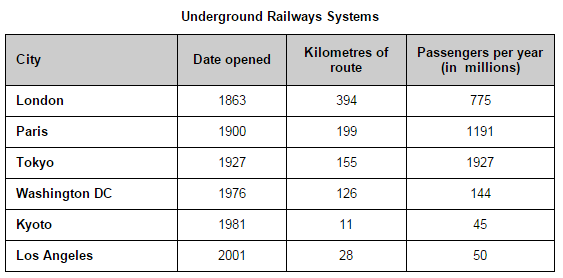
Sample Speaking: The table shows data on underground railways systems measure in millions of passengers in six metropolitan cities namely London, Paris, Tokyo, Washington DC, Kyoto and Los Angeles. The highest number of passengers were recorded at Tokyo railway system with 1927 passengers followed by 1191 passengers at Paris. The least number of passengers and route were found at Kyoto with 45 passengers and 11 kilometres respectively.
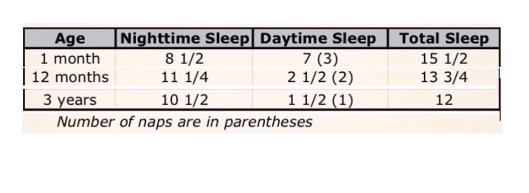
Sample Speaking: This table represents the information about sleep patterns for kids of ages 1 month, 12 months, and 3 years. A one-month-old baby sleeps almost an equal number of hours during the day and night. 12 months and 3-year-old baby get the majority of sleep during the night. In conclusion, the amount of total sleep required for a baby reduces as they get older, and the frequency of naps also reduces.
PROCESS DIAGRAM

Sample Speaking: This image represents the process of production of a sleep hormone called Melatonin. When the human eye sees a candle light there is inhibition, and during darkness, there is stimulation of melatonin production. Melatonin is produced in the brain by the pineal gland, upon the stimulus from the eyes. The production and inhibition create the biological clock of the body. In conclusion, this shows how our body responds to light and darkness, and how the production of Melatonin depends on the light.

Sample Speaking: This image represents the manufacture and distribution of clay bricks.Firstly, the clay is dug out of the earth by a digger and sorted on a metal grid and roller. The clay is then mixed with sand and water and shaped in either a cutter or a mold, before being dried in a kiln. The kiln operates at different high temperatures, after which the bricks are cooled. Finally, the bricks are packaged and delivered to their destination. This brick-making and distribution process is a straightforward and effective way of manufacturing bricks for the building industry.
MAP

Sample Speaking: This image represents the countries on the world map that are potentially vulnerable to climate change. The least vulnerable countries are in North America and in Eastern Europe, while less vulnerable countries include Russia, Australia, Mexico, and South Africa. The countries in the intermediate range contain south American countries and a few countries in the African continent. The vulnerable countries include China and Pakistan while the most vulnerable countries are India, south Asian countries, and a few African countries. In conclusion, developing countries are the most affected, while developing countries are the least affected.

Sample Speaking: Well here we are at the top of the town and we gonna look at the view from each direction. Out to the east, large buildings about a kilometer away from the Olympic site, there an indoor arena for gymnastics, a swimming pool for swimming, and a Stadium (track and field). If you look carefully down there, you can see the train line. The Olympic site has a station to encourage the use of public transport. If you look at the south, you can see a circular ornamental pond, and around the west, you can relax and sit on the bench to smell the flowers in the rose garden. Finally up to the north, if you look in front of you now, there is a lake with a small island in the center and a boat in North-West.
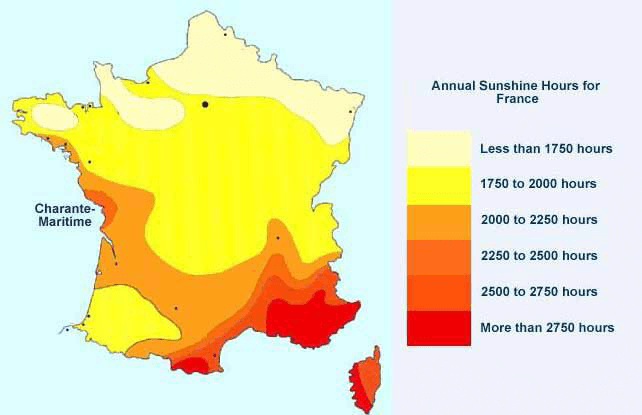
The map shows the annual sunshine hours for France. According to the map, there are six ranges of hours are recorded, which are from less than 1750 hours to more than 2750 hours. It is clear that the sunshine hours decrease from north to south, and the south part of the France has the most sunshine hours which are more than 2750 hours per year. Furthermore, Charante Martimein is the only place in the middle part of the France which the annual sunshine hours are over 2250. In conclusion, the map provides detailed status of annual sunshine hours for France.
VENN DIAGRAM
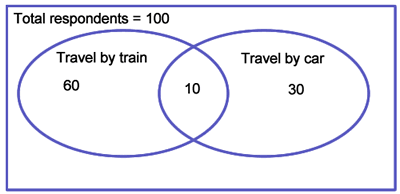
Sample Speaking: This diagram shows how a selection of 100 second-year university students traveled to university. 60 students said that they traveled by train, 30 stated that they traveled by car, and 10 students stated that they traveled by both car and train. One could conclude that most respondents traveled to the university by train, a minority traveled only by car, while a small number of the respondents, 10%, traveled by both train and car.

Sample Speaking: As you can see now that you have had a go at this section it’s not about how complicated you can make the description sound, but about being clear,precise, and accurate you come across to the listener. Go back and listen to your recording and ask yourself if you were clear, if you articulated your ideas effectively, and if you pronounced the keywords well. Below the question, there is a sample answer. It’s always a good idea to go through and listen to the sample answers to get an idea of what the ‘perfect’ answer sounds like. Listen to your answer and then listen to the sample answer and make notes on what was lacking or unnecessary in your answer to help you make the best self-assessment. All the information is there in front of you, you just need to make sense of it. Practice makes perfect and that’s what you are here to do. So don’t worry if you didn’t smash it the first time, you’ll soon get the hang of it.
CYCLES
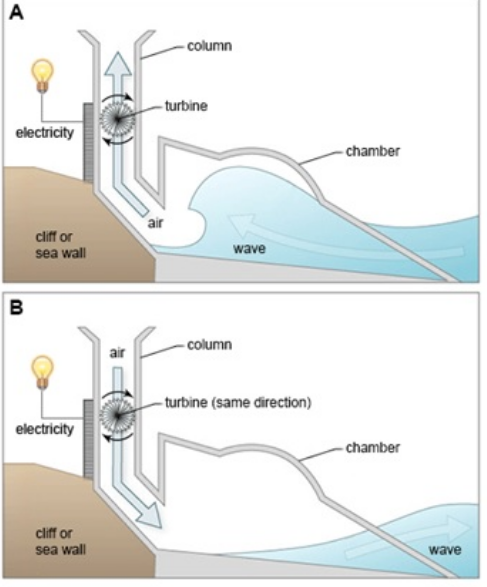
Sample Speaking: The diagram shows the structure that is used to generate electricity from wave power. Two diagrams show how electricity is generated from the rise and fall of water caused by sea waves. The process involves a structure that is mounted on the side of a cliff or a sea wall. This structure consists of a large chamber. One end is open to the sea and the other leaders into a vertical column which is open to the atmosphere. The first diagram indicates that the moment when the wave approaches the device, water is forced into chamber, applying pressure within the column. The second one depicts the waves retreating. As a result, electricity continues to be generated. The turbine rotates only in one direction, regardless of the direction of air flow.
PICTURE

Sample Speaking: The picture shows us the structure of lower mantle. As we can see from the picture, the earth has the layers of lithosphere, mantle and core. Specifically, lithosphere consists of crust and uppermost solid mantle, and the mantle consists of lower mantle and asthenosphere. In addition, there are two layers of core which are solid core and liquid core. In conclusion, lower mantle is the middle layer of the earth.
FLOWCHART

Sample Speaking: Flowchart illustrates the production of colored plastic paper clips in a small factory. There are four main stages in the production of plastic paper clips from a small factory. Two of these stages involve actual preparation of the clips, while the other two consists of quality control before the clips are sent out from the factory to the retailers to be sold to the public. Molten plastic is poured into three different molds which depends on the color required. Once these clips emerge from the molds a quality control machine checks them for the street. Then clips are stored by hands into two groups, mixed and single colors. After that color mixtures are divided correctly into single colors and mixed color batches. Finally, the clips are packed and dispatched to markets.

Sample Speaking: The image shows the Enquiry Process and Terms of Reference for Australia in 2015. The process begins with the Terms of Reference and ends with the Government response. In the beginning, there is initial research and consultation followed by an Issues Paper and a call for submissions. Then there is a Review of Submissions. Later a Discussion paper is produced. This is reviewed and after further consultation, a final report is produced. This then goes to the government and a response is given which may involve a change in the law.T


